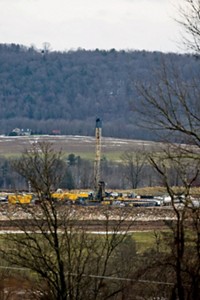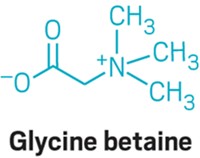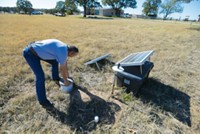Advertisement
Grab your lab coat. Let's get started
Welcome!
Welcome!
Create an account below to get 6 C&EN articles per month, receive newsletters and more - all free.
It seems this is your first time logging in online. Please enter the following information to continue.
As an ACS member you automatically get access to this site. All we need is few more details to create your reading experience.
Not you? Sign in with a different account.
Not you? Sign in with a different account.
ERROR 1
ERROR 1
ERROR 2
ERROR 2
ERROR 2
ERROR 2
ERROR 2
Password and Confirm password must match.
If you have an ACS member number, please enter it here so we can link this account to your membership. (optional)
ERROR 2
ACS values your privacy. By submitting your information, you are gaining access to C&EN and subscribing to our weekly newsletter. We use the information you provide to make your reading experience better, and we will never sell your data to third party members.
Environment
Toxic biocides may not be needed routinely at fracking sites, study shows
Tests find that some fracking sites don’t contain pipeline-fouling microbes
by Elizabeth K. Wilson
April 7, 2016
| A version of this story appeared in
Volume 94, Issue 15

When oil and gas companies extract fuel from the earth via fracking, they routinely add biocides such as glutaraldehyde to the high-pressure water they use to fracture rock formations deep underground. These compounds are a preemptive strike against microbes that produce hydrogen sulfide, which can corrode pipelines.
New research, however, calls into question the across-the-board addition of toxic biocides to water used in fracking. Jason Gaspar and Pedro Alvarez at Rice University and colleagues, including scientists at energy firm Statoil, performed numerous tests at fracking sites in the Bakken Shale Formation in the north-central U.S. and in Canada. There, they found that H2S might be formed in fracking wells by geochemical reactions, rather than microbes (Environ. Sci. Technol. Lett.2016, DOI: 10.1021/acs.estlett.6b00075).
At the Bakken sites, the team found, temperatures at the depths that the biocide-laden water is injected run about 120 °C, too hot for sulfogenic microbes to survive. In addition, DNA tests of injected water samples showed no evidence of microbes, and sulfur isotope analysis indicated that H2S recovered from the samples was produced abiotically.
The researchers suggest that the H2S might instead have been produced via the reaction of underground calcium sulfate anhydrite with methane.
H2S problems at other, cooler sites, such as the Marcellus shale formation in the eastern U.S., may still be caused by bacteria.
But, Gaspar says, a well-by-well approach to applying biocides might be more cost-effective. For example, companies could take core samples at each site and share their results in an open-source database.
Thomas Borch of Colorado State University says the discovery that H2S may be produced abiotically is “definitely eye-opening.” However, he’s concerned that the abiotic H2S treatment could involve increased use of corrosion inhibitors.
Radisav Vidic, at the University of Pittsburgh, says the study adds to growing evidence that the blanket use of biocides is unwarranted.
Kyle James Bibby, also at the University of Pittsburgh, agrees. “This work is an important reminder that biocide isn’t the solution to all problems,” he says.





Join the conversation
Contact the reporter
Submit a Letter to the Editor for publication
Engage with us on Twitter